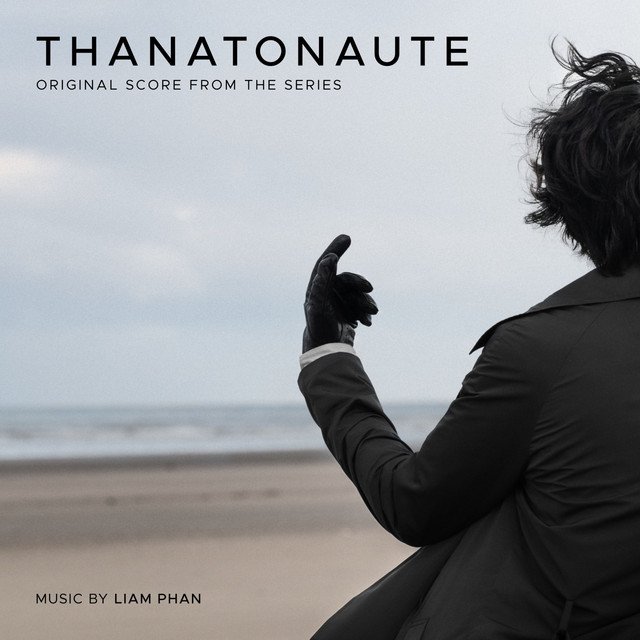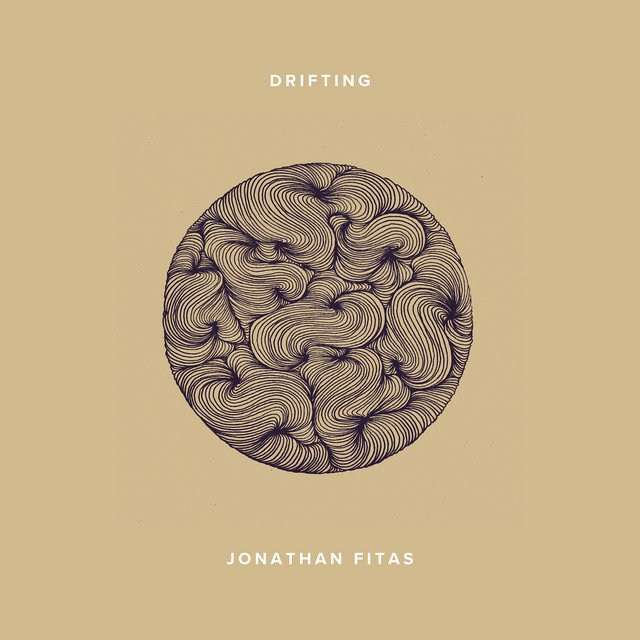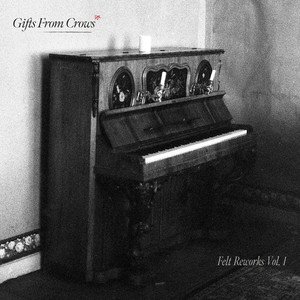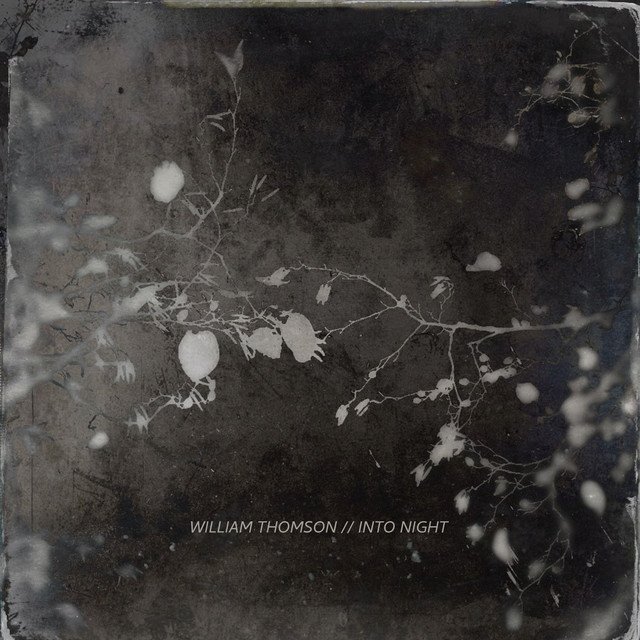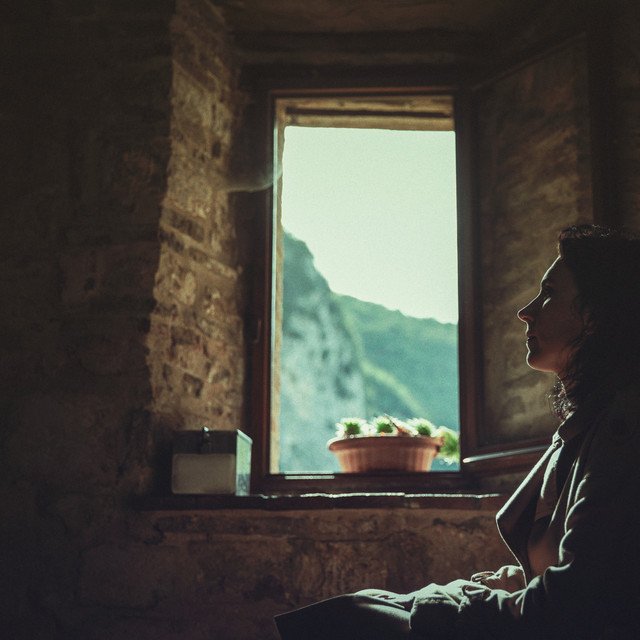Neoclassical Music ⁞ New Releases⁞ Artist Interviews⁞ Music News
Introduction of Neoclassical Music
Neoclassical music is a style of classical music that is characterized by its use of traditional forms and styles, as well as a focus on structure and balance. It is often seen as a reaction against the romantic style of music, which was characterized by emotion and passion, and was influenced by the ideas of the Enlightenment, which valued reason and classical learning.
Some of the key features of neoclassical music include the use of traditional forms such as sonata form, the use of clear and concise melodies, and the incorporation of elements of folk music and popular music. Neoclassical music also often featured a return to tonality, which is the use of a specific key or tonal center in a piece of music.
The neoclassical style has had a lasting influence on classical music, and it continues to be an important part of the classical repertoire
Favorite Neoclassical Music on Spotify
Favorite Neoclassical Videos on Youtube
Recent Neoclassical Interviews
Maria Grönlund Interview on Nagamag
.
Nagamag:
What are the genres that describe better your music style?
Maria Grönlund:
Neo-Classical, Modern Classical, Contemporary Classical
Nagamag:
Few words about your musical background and career?
Maria Grönlund:
You may know Stockholm’s Maria Gronlund from her weekly live stream ‘Meet Me At The Piano’ on Facebook. Or from her debut album ‘Songs of a Sad Sailor’, which was a Spotify Classical Pick. Or even from her short collection last Autumn called ‘Colors of my Mind: Pt. 1’, which was the first of three releases that will go to make up her next LP ‘Colors of my Mind’. Part 2 of the collection is nearly upon us with three pieces of neo-classical imagination due later this month.
Nagamag:
Do you remember your first connection of love to music that was the right impact to be a music artist now?
Maria Grönlund:
There was a lot of music and singing in my family, and I was five or six years old when we inherited a big, black, shiny piano from my grandfather. My mother had always dreamed of learning how to play the piano, and she found us an Austrian piano teacher named Helga, who taught us both to play in her house. I was tiny, and I got my lessons at a brown piano in her basement, and then I stood and peeked into the living room with the two grand pianos standing opposite each other, while my mom got her lesson. I was totally fascinated by the instruments and imagined they were like fairy tale ships to another world, since they gave out such amazing sound. I've been in love with the piano ever since.
Nagamag:
Tell us more about the project you're working on right now!
Maria Grönlund:
I'm in the midst of a project called 'Colors of my mind', which will culminate in a full album released both digitally and physically, and with an online album experience which will feature the creation process of the music and all the art involved. Artwork merch will also be an important part of this project.
It all originates from a lengthy, filmed joint improvisation I made together with an artist, Madelene Egerfält, where she painted what she heard me play and i played what I saw her paint. We both came into a state of flow and had a really intense experience. The painting is just amazing, and I feel it depicts both her and me, and the situation it was created in.
I've used the musical material from this occasion and built it out to ten piano pieces that I release in three rounds. EP Colors of my mind Pt.1 was released in the late fall, Pt.2 now in March, and Pt.3 and thus the full album is planned for late spring/early summer this year.
Nagamag:
What's the ethos behind your music?
Maria Grönlund:
I feel so rich having music in my life. It helps me cope with stress and difficulties. I often play to calm myself down and to sort my thoughts and feelings out. My vision is to share the feeling of relief and joy I get from playing with people who might need it.
Nagamag:
Most artists have a favorite song from a different music genre than the one they are producing music for... Which is yours?
Maria Grönlund:
Imogen Heap "Earth"
Nagamag:
Of Course Nagamag would love to listen also which track from a similar artist you admire?
Maria Grönlund:
Poppy Ackroyd "Time"
Jaap Mol Interview on Nagamag
.
Nagamag:
What are the genres that describe better your music style?
Jaap Mol:
My main genre is neo classical. But I tend to expand it to ambient electronic music with some beats where I feel they add something to the music.
Nagamag:
Few words about your musical background and career?
Jaap Mol:
I started taking classical piano lessons when I was about 6 years old. I don't exactly remember why it were piano lessons and not another instrument, but I kept playing for years. I even played church organ for while, but discovered I'm way more inspired by a piano.
When I was around 15 years old, I discovered punk bands and that was all I wanted to play from that point on. So I bought a bass guitar, started a band and quit my piano lessons when I was 18. Since then I played in all kinds of bands, mostly pop punk, but also bands inspired on those really cool emo core bands from the zeros which I still love.
But when I finished my study, that musical environment dried up and so did the bands. I went back to my keys, sang in a a capella group and worked on some music on my own but never really got back to it; life happened and I got a job as a teacher. Back then I thought I'd never do any serious music at all ever again.
But then a friend of mine started a band and needed someone to play keys and that's how I got back into music. It worked out really well and I started playing in bands again, but this time no punk and bass guitars, but keys in pop, pop-rock and electro pop bands.
Meanwhile I discovered that my love for pop music and my interest in quiet piano and string music could be mixed pretty good and I started experimenting with what turned out to be the neo classical ambient music I create now. But I am always tempted to try new styles and experiment with other genres. Right now, for example, I worked on a live show for which I remixed all my tracks into an ambient electronic hybrid DJ-set.
That's what I love about music the most; I get bored quite easily, but never with music. It's an endless source of inspiration.
Nagamag:
Do you remember your first connection of love to music that was the right impact to be a music artist now?
Jaap Mol:
I think, funnily enough, that first feeling when I heard a punk track on the radio has been one of the most important moments to spark my music career. I waited for weeks, glued to the radio, to record that one song to tape, because I never heard anything like it. That was a really important moment, because that was when I realised that it was actually possible to create something myself.
Nagamag:
What inspires you to create new music?
Jaap Mol:
Everything I create in music always starts with a sound I love. That can be the sound of a beautiful old piano, something I come up with when tweaking a synth, or just a sample from a plugin in my DAW.
I'm not a very technical player, and at first I saw that as a limitation. But I learned that to be really creative, you have to set boundaries and limitations, and mine forces me to really dive into a sound I love, and create something beautiful from that. I'm embracing that now, and I'm really happy with how it turns out.
Nagamag:
What does your creative process look like?
Jaap Mol:
I like to do a lot by myself. I'm kind of a control freak, so when I didn't find what I wanted to create elsewhere, I wanted to master the whole process. I compose and produce while writing, just like pop records.
Sometimes I ask other studios for help because they have better equipment, but most parts I record at my own place. I like to do the mixing myself as wel, because a lot of mixing happens during the production.
I like to work with concepts for my music, so that's why I prefer to do al the artwork, photography and video's myself as well. To master all theses parts of the creative process takes a long learning curve, but I like to be curious and just love discovering new things to improve. It's an infinite playground.
Nagamag:
Most artists have a favorite song from a different music genre than the one they are producing music for... Which is yours?
Jaap Mol:
Sufjan Stevens "A Little Lost"
Nagamag:
Of Course Nagamag would love to listen also which track from a similar artist you admire?
Jaap Mol:
Jon Hopkins "Echo Dissolve"
Neoclassical Features
Deliverance – Liam Phan
“Stunning and incredibly calming atmosphere of this piano beauty engage deeply within first notes. Harmonic structure and composition are done in a beautiful way, reminiscing the movie themes with its depth that can be felt within this blissful keys. Arrangement, although short, will engage deeply with your thoughts. ”
-Nagamag.com
Drifting – Jonathan Fitas
“Mesmerizing and incredibly calming atmosphere of this piano beauty engage deeply within first notes. Harmonic structure and composition is done in a beautiful way, reminiscing the movie themes with its depth that can be felt within this blissful keys. Joyful mood is definitely something to hold on to.”
-Nagamag.com
Latest Neoclassical discoveries
Release Review: Tryfon Koutsourelis – Pulsation brisée-Edit | Neoclassical
Αργά και νωχελικά η υπέροχη μελωδία μας πλησιάζει και απλώνει το θλιβερό και μεγαλειώδες πέπλο της. Τα επιβλητικά βήματα της ... >>> Read full review & listen to the song on Nagamag #neo #modernclassical #crossoverclassical #tryfonkoutsourelis #unitedkingdom #nagamag #musicmagazine #musicreview #review
Track Review: Gifts From Crows – Something Thought Lost is Found – Felt Rework | Neoclassical
Οι γλυκές νότες της μελωδίας με την μελαγχολική διάθεση τους μας αγγίζουν και παιχνιδιάρικα μας αγκαλιάζουν σαν να θέλουν να ... >>> Read full review & listen to the song on Nagamag #neo #modernclassical #giftsfromcrows #unitedkingdom #nagamag #musicmagazine #musicreview #review
Song Review: “Into Night” by William Thomson | Neoclassical Essential
Οι μαγικές νότες της μελωδίας με την ρομαντική διάθεση τους και το εκλεπτυσμένο άγγιγμα τους μας γεμίζουν ωραία συναισθήματα.... >>> Read full review & listen to the song on Nagamag #piano #nagamag #musicmagazine #musicreview #review
Music Critique: Mary Komasa – Sister | Neoclassical Review
Η όμορφη μελαγχολική μελωδία μας συγκινεί και το σώμα μας καθηλώνεται από το μέγεθος των συναισθημάτων μας. Τα υπέροχα φωνητι... >>> Read full review & listen to the song on Nagamag #neo #modernclassical #indiepop #dreampop #marykomasa #germany #nagamag #musicmagazine #musicreview #review
Composition Critique: “Clarion” by Keen Collective | Neoclassical Review
Οι νότες του πιάνου μου μεταφέρουν μια απρόσμενη ευτυχία και η υπέροχη μελωδία με κάνει να στροβιλίζομαι ανέμελα σαν το φύλλο... >>> Read full review & listen to the song on Nagamag #neo #modernclassical #keencollective #unitedstates #nagamag #musicmagazine #musicreview #review
Music Review: Magnus John Anderson – The Years After | Neoclassical Release
Ωραία μελωδία που σε ταξιδεύει πέρα από τον ορίζοντα και αφήνει την φαντασία σου ελεύθερη. Σαν το παιχνίδισμα του ανέμου στα ... >>> Read full review & listen to the song on Nagamag #neo #modernclassical #cinematic #epicmusic #magnusjohnanderson #sweden #nagamag #musicmagazine #musicreview #review
Maria Karakusheva – The Wild Iris | Neoclassical Spotlight Review
Η ωραία μελωδία με το απαλό άγγιγμα της ζωντανεύει τις σκέψεις σου και οι εικόνες διαδέχονται η μία την άλλη. Νοσταλγικά συνα... >>> Read full review & listen to the song on Nagamag #piano #nagamag #musicmagazine #musicreview #review
Review: Olivia Belli – Anima IV | A Neoclassical Discovery
Η μελωδία απαλά και διακριτικά σε πλησιάζει και διηγείται την ιστορία της μέσα από τις υπέροχες αυτές νότες. Αρκεί ένα ταξίδι... >>> Read full review & listen to the song on Nagamag #neo #modernclassical #solopiano #oliviabelli #italy #nagamag #musicmagazine #musicreview #review
Critique: “Ease” by William Thomson | Neoclassical Review
Η μαγεία της φύσης σε γεμίζει χαρά και ευγνωμοσύνη και η γλυκιά αυτή μελωδία περιπλανάτε μέσα στις φυλλωσιές των δέντρων για ... >>> Read full review & listen to the song on Nagamag #neoclassical #nagamag #musicmagazine #musicreview #review
Difference between Classical and Neoclassical Music
Classical music refers to a broad range of music written in the classical tradition, which encompasses a wide range of styles and forms. It is generally characterized by its formal structure and its use of traditional instruments and ensemble configurations.
Neoclassicism is a style of music that refers to the revival and use of classical forms and styles in music, particularly in the 18th and early 19th centuries. It is characterized by its use of clear, concise forms and a focus on structure and balance. Neoclassicism was a reaction against the romantic style of music, which was characterized by emotion and passion, and was influenced by the ideas of the Enlightenment, which valued reason and classical learning.
Some of the key differences between classical and neoclassical music include:
Time period: Classical music refers to music written during the classical period (1730-1820), while neoclassicism refers to music written after the classical period that incorporates elements of classical forms and styles.
Emphasis on structure: Classical music is known for its formal structure and the use of traditional forms such as the sonata and the symphony. Neoclassical music also places a strong emphasis on structure, but may also incorporate elements of popular music and folk music.
Emphasis on emotion: Classical music is often more reserved and formal in its emotional expression, while neoclassicism tends to be more emotional and expressive.
Use of tonality: Both classical and neoclassical music use tonality, but neoclassicism often incorporates a wider range of tonal structures and may experiment with atonality.
Use of traditional instruments: Both classical and neoclassical music use traditional classical instruments such as strings, woodwinds, brass, and percussion. However, neoclassicism may also incorporate elements of popular music and folk music, and may use a wider range of instruments.
Overall, the main difference between classical and neoclassical music is the time period in which the music was written, and the specific techniques and styles used by the composer. Classical music is generally more formal and reserved in its expression, while neoclassicism tends to be more expressive and may incorporate elements of popular music and folk music.
The most used instruments in Neoclassical Music
In neoclassical music, the most common instruments used are those found in the classical orchestra, including:
Strings: Violin, viola, cello, double bass
Woodwinds: Flute, oboe, clarinet, bassoon
Brass: Trumpet, French horn, trombone, tuba
Percussion: Timpani, snare drum, bass drum, cymbals, xylophone, marimba, triangle
Keyboard: Piano, harpsichord
These instruments are often used to create a wide range of textures and sounds, and are featured in many different types of classical music, including neoclassical music. In addition to these instruments, many composers also incorporate elements of popular music and folk music into their compositions, and may use a variety of other instruments such as guitars, bass, drums, and synthesizers.
It’s also worth noting that many composers and performers of neoclassical music are skilled in a variety of different instruments, and may switch between different instruments in order to achieve the desired sound and texture.
Vocals are sometimes used in neoclassical music, although they are not as common as instrumental music. When vocals are used in neoclassical music, they are typically performed by trained classical singers who have the ability to sing with precise pitch and control.
One common use of vocals in neoclassical music is in operatic compositions, where singers perform arias and recitatives in a style that is similar to traditional opera. Neoclassical opera is a subgenre of classical music that combines elements of traditional opera with elements of neoclassicism, and often incorporates elements of popular music and folk music.
In addition to operatic vocals, vocals may also be used in other forms of neoclassical music, such as choral music or vocal chamber music. Some composers may also incorporate elements of popular music or folk music into their compositions, and may use vocals in a more modern or experimental style.
It’s worth noting that the use of vocals in neoclassical music is highly dependent on the individual composer and the specific piece of music, and not all neoclassical compositions will feature vocals.



